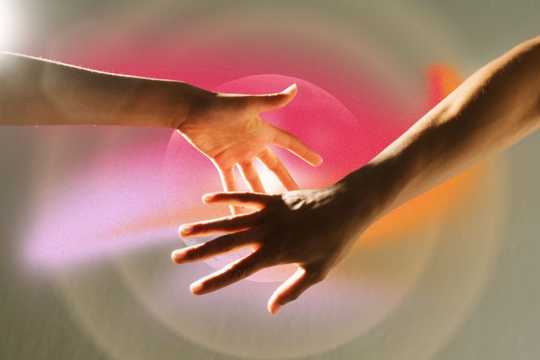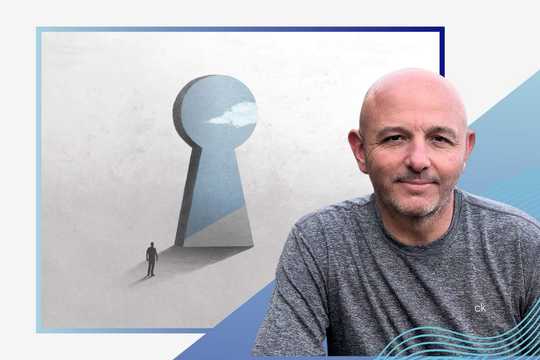The majority of people will experience trauma sometime in their life. Learn how to identify trauma symptoms and paths to healing.
Part 1: The Ugly Truth About How To Recognize Trauma
Part 2: Discover the Secret to Identifying Trauma
Part 3: Why is Trauma Stored in the Body
Part 4: Know the 7 Types of Trauma
Identifying trauma symptoms is much easier than you think. There’s really no secret to it. The only reason identifying trauma symptoms is a “secret” is because our society severely lacks trauma education and awareness.
In a previous blog titled “The Ugly Truth About How to Recognize Trauma” we noted how 70% of the population will experience trauma in their lives. If we had a broader understanding of trauma’s impact on society, we’d be acting much differently. As the old saying goes, “hurt people, hurt people.” When someone doesn’t treat you well, it might be due to their trauma.
In “The Ugly Truth About How to Recognize Trauma” we took a look at the events and experiences that can trigger trauma. There are two primary aspects of trauma, and knowing the events that can trigger trauma is one of them. If you don’t know these triggers already, we recommend you go read that blog.
The other primary aspect of trauma is the physical and emotional symptoms. Along with the triggers, the symptoms are just as important to know and recognize.
So let’s learn about the physical and non-physical symptoms of trauma to complete the full picture.
Follow your Curiosity
Sign up to receive our free psychedelic courses, 45 page eBook, and special offers delivered to your inbox.Why It’s Important to Recognize Triggers and Symptoms
Here’s why being familiar with both the triggers of trauma and its symptoms are important. Overall, as a society, we’re sorely lacking in trauma awareness. This leads to people not getting the help, healing, support, and love they need. Let’s look at some theoretical examples.
- A person is totally uneducated and unaware of trauma and what it is. This means they can’t help anyone close to them that may be traumatized because the friend, family member, or loved one doesn’t recognize trauma. Pain and suffering are likely to continue.
- A person knows the triggers of trauma. At least if a person knows some of the triggers (war, domestic abuse, sexual assault, etc.), they have a fighting chance of helping someone who may need it. However, there’s a caveat here. You have to know that your loved one, family member, or friend, suffered this trauma-triggering event. Frequently, traumatized people are ashamed or embarrassed to be vulnerable and share their experience with others. So, they try and hide their trauma. If you don’t know that a person has experienced a traumatic event, you may only have a hunch that something isn’t right. This would be like deductive reasoning – moving from broad generalizations to specific observations. You might wonder, “John Doe is a veteran. He acts differently after his combat experience compared to prior. I can’t put my finger on it though.” At minimum, there’s a vague awareness that something isn’t right, and pain and suffering result.
- That’s why knowing trauma symptoms is crucial. You’re more likely to deduce that a person has undergone a traumatic experience by identifying trauma symptoms. If you witness some of the symptoms, you might be able to start putting a picture together. This would be an example of inductive reasoning. Moving from specific observations to broad generalizations. “John Doe exhibits X, Y, and Z trauma symptoms. He must have gone through some traumatic experience. But I don’t know what that is.” That’s if the friend, family member, or loved one doesn’t know about the traumatic experience already. This leads to better awareness of trauma, resulting in a more confident call for help for the traumatized person.
- By being able to recognize both the triggers and symptoms of trauma, someone has a much greater chance at offering loved ones, family members and friends the help they need. They may not take the suggestion well, and that doesn’t mean you’re necessarily wrong. This is the highest level of awareness that will most likely lead to a wounded person getting the help they need.
Due to the nature of trauma, it’s a cloaked affliction. As noted above, 70% of the country will experience trauma. It bears repeating that “hurt people hurt people.” Millions upon millions of people are suffering from trauma daily and hurting others. Due to its prevalence, we’ve become conditioned to living in a sick and dysfunctional society. We think people hurting us is “normal.” This is what makes trauma so insidious. Often people go undiagnosed for their entire lives because the people around them don’t identify their trauma and mistake it for normal behavior.
So what is abnormal behavior? How do more of us start identifying trauma symptoms?
There are 3 categories or types of trauma. They are acute, chronic and complex. We’ll save an overview of these for another blog. For now, be aware that the following physical and non-physical symptoms of trauma can vary between the 3 types.
Let’s start by identifying trauma symptoms of the non-physical variety.
Identifying Non-Physical Trauma Symptoms
The 3 non-physical trauma symptoms types are cognitive, psychological, and behavioral.
Right after a traumatic event, experiencing strong non-physical and physical reactions is common. The majority of people find that their reactions and feelings fade away over the coming days or weeks. Although, select individuals suffer psychological/emotional trauma symptoms that grow in severity and duration. This is due to a wide variety of factors: present and past life stressors, emotional support supply, coping mechanism access, personality types, and traumatic event profile.
For an excellent overview, check out this video
In short, the video highlights these 9 symptoms. As you read further, you’ll begin to see commonalities. In brief, here are those 9 signs:
- You resist positive change.
- You need to plan for EVERYTHING. (Need for control)
- You have a strong fear of failure.
- You have a strong fear of success.
- You have difficulty concentrating.
- You have trouble asking for help.
- You often hurt yourself or others.
- You struggle with self esteem.
- You have unexplained psychological symptoms.
In addition to hinting at ego problems (which can indicate trauma), these 9 signs of unhealed trauma find similarities with the following lists. Look for the common themes starting with cognitive symptoms of trauma.
Cognitive Symptoms of Trauma
Some of the common symptoms of cognitive trauma include:
- Intrusive thoughts of the event that may occur out of the blue
- Nightmares
- Inability to have a restful sleep
- Visual images of the event, flashbacks
- Loss of memory and concentration abilities; inability to focus on work or studies
- Disorientation
- Feeling of disconnection from the surroundings
- Confusion
- Mood swings
Psychological Symptoms of Trauma
Some of the common symptoms of psychological trauma include:
- Fear, ranging to overwhelming fear
- Obsessive and compulsive behaviors
- Detachment from other people and emotions
- Emotional numbing
- Changes in libido/interest in sex
- Depression
- Guilt, survivor guilt
- Shame, self blame
- Unreasonable lack of trust, feelings of betrayal
- Emotional shock
- Disbelief
- Irritation
- Anger, mild to extreme
- Aggressive behavior
- Anxiety
- Excessive anxiety or panic, panic attacks
- Unpredictable outbursts of anger, rage
- Increased use of alcohol or drugs and/or overeating
Behavioral Symptoms of Trauma
Some of the common symptoms of behavioral trauma include:
- Avoidance of activities or places that trigger memories of the event
- Social isolation and withdrawal
- Diminished or lack of interest in previously-enjoyable activities
- Lack of self-care or grooming
- Increased use of alcohol or drugs and/or overeating
- Changes in libido/interest in sex
Identifying Physical Trauma Symptoms
An invaluable lesson when learning about trauma and its symptoms especially is that the body stores trauma. Emotional, psychological, and cognitive symptoms get stored to later manifest physically in the body. This can be quite a surprising revelation if you’re unaware. Many of our physical maladies originate in trauma. In effect, your body becomes a scorecard for all the trauma you’ve accumulated and not healed throughout your life. Your body is like the referee keeping score. The referee always wins. Watch this broken down here:
Mental illness takes a toll on our bodies, as well as our minds. We have to learn how to listen to our bodies. We have to learn how to reassess the root of our illnesses. More often than we realize, the remedy lies in the mind and spirit, as opposed to body alone.
Some of the common symptoms of physical trauma include:
- Easily startled, by noises or unexpected touch
- Sudden sweating and/or heart palpitations
- Fatigue ranging to tremendous fatigue and exhaustion
- Tachycardia
- Headaches
- Edginess
- Insomnia
- Nausea
- Constipation, diarrhea
- Chronic muscle patterns
- Sexual dysfunction
- Changes in sleeping and eating patterns, interest in sex
- More susceptible to colds, illnesses
- Body aches, backaches and pains
- Extreme alertness; always on the lookout for warnings of potential danger (characteristic of PTSD)
To wrap up with identifying physical trauma symptoms, here’s one last video – 5 Physical Signs of Past Trauma That Most People Miss.
After watching the video, once again, you see similarities with the symptoms listed above. In short, the video notes these 5 specific symptoms:
- Chronic sense of fight or flight (can be fright/freeze also)
- Chronic fatigue (no matter how much you sleep) R/T constant state of fight or flight
- Sense of chronic pain
- GI distress/disturbance & autoimmune diseases w/unknown etiology
- Chronic headaches
Final Notes on Identifying Trauma Symptoms
Please keep in mind that the previously listed symptoms are broad based. They’re common symptoms that apply to a wider demographic. Not everyone will experience the same symptoms. None of the symptoms are mutually exclusive. People suffering trauma will most likely have a blend of symptoms depending on their unique circumstances.
Trauma is an enormous topic. Other specific situations with unique symptoms include domestic violence survivors, sexual assault survivos, childhood abuse victims, and war veterans with PTSD to name but a few. In these cases, symptoms will differ. They’re more unique, rare, and severe.
As severity of trauma increases, causing PTSD for example, symptoms will increase. PTSD symptoms differ slightly among these more traumatized demographics. All these unique groups deserve their own dedicated discussions.
Lastly, a person can suffer trauma and not show obvious outward signs of mental health issues. Yet, they still have psychological, cognitive and/or emotional symptoms. In these cases, frequently a person’s ego has been built up to an unhealthy degree to shield them from their inner wound.
This type of trauma is much more common and easier to be unaware of. A person with an overdeveloped ego can still cause a lot of damage to people around them. But because this type of trauma is nebulous and doesn’t involve as many obvious symptoms, we often don’t make the connection between egoic behavior and trauma
The topic of egoic behavior and trauma is a fascinating one. We’ll cover that in a future blog.
If you want to learn more about trauma, the next step is to learn how to treat trauma. Click through here to find therapists who can help you heal from traumatic experiences.






